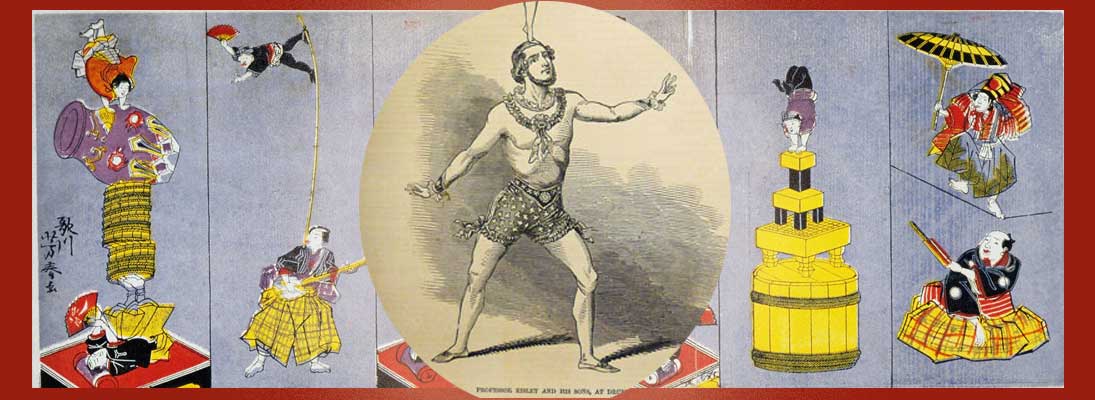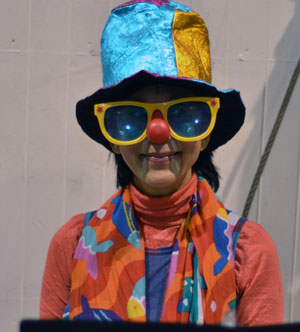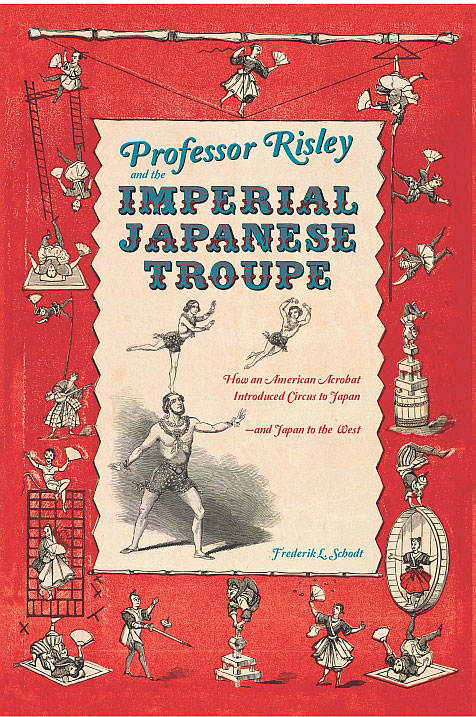
Professor Risley and the Imperial Japanese Troupe
How an American Acrobat Introduced Circus to Japan--And Japan to the West
Data and Other Info
Table of Contents
Preface
Act 1— Setting the Stage
Where Is Risley? • The Context • The Imperials at Last • Opening at the Academy of Music • A Deal with Maguire
Act 2— The Risley Act
A Restless Spirit • Beyond Circus • Off to Europe • Going Global • Panorama Man • The Sky Is the Limit
Act 3— Going for Gold
California Dreaming • The Sandwich Islands • New Zealand • Australia
Act 4— Into Asia
Calcutta • Singapore, Batavia, Hong Kong, Bangkok, and Manila • Shanghai • Thoughts of Japan
Act 5— Yokohama, Japan
The Settlement • Introducing Western Circus • Stuck in Japan • A Different Approach • Circus Approximate in Japan • Beginnings of the Imperial Japanese Troupe
Act 6— Taking America
Heading for the East Coast • Philadelphia • Washing ton, D.C. • New York and the Imperials’ Acts • Over exposure and an Identity Crisis
Act 7— At the Exposition
Competition in Paris • Performing in Paris • A Few Difficulties • South to Lyon
Act 8— The Long Way to London
A Rough Start • Holland and Belgium • London at Last • Drama Onstage and Off
Act 9— The Matter of the Contract
Spain • Portugal • Back to France • New York Again, at Last
Act 10— Final Acts
The Imperials, Streamlined • Back to Britain • A “Dreadful and Humiliating Punishment” • The End of a Long Run
Afterword
Notes
Select Bibliography
Index
Ordering
 Professor Risley and the Imperial Japanese Troupe: How an American Acrobat Introduced Circus to Japan--And Japan to the West was published by the intrepid Stone Bridge Press, of Berkeley, California, in 2013. It won the Stuart Thayer Prize from the Circus Historical Society. It is available for order through finer bookstores (please also ask them to stock it), as well as on Amazon, Barnes and Noble and other on-line retailers. It is also available as an ebook on the Amazon Kindle platforms for PC, Macs, and tablets as well as other platforms.
Professor Risley and the Imperial Japanese Troupe: How an American Acrobat Introduced Circus to Japan--And Japan to the West was published by the intrepid Stone Bridge Press, of Berkeley, California, in 2013. It won the Stuart Thayer Prize from the Circus Historical Society. It is available for order through finer bookstores (please also ask them to stock it), as well as on Amazon, Barnes and Noble and other on-line retailers. It is also available as an ebook on the Amazon Kindle platforms for PC, Macs, and tablets as well as other platforms.
HARDBACK: 336 pages w/ copious B&W and color illustrations & maps
Publisher: Stone Bridge Press, First Edition (2013)
Language: English
★AMAZON
★BARNES & NOBLE
Avilable also as EBOOK on multiple platforms
EISBN : 9781611725254
★AMAZON KINDLE
★BARNES & NOBLE
Even more options via publisher's site @
STONE BRIDGE PRESS
More Info
Text links
- "Richard Risley Carlisle, Man in Motion" by Stuart Thayer and William L. Slout, with Aya Mihara.
- "Professional Entertainers Abroad and Theatrical Portraits in Hand", by Aya Mihara.
- "How Risley Lost at Billiards" by Mary Evans, Sports Illustrated.
- Deracine. Website run by Oshima Mikio (大島幹夫), circus promoter, producer, historian, and publisher of Art Times, a magazine which often features articles about Japanese circus and history, and has run many of Aya Mihara's articles.
Organizations
- Circus Historical Society
- Circopedia (A priceless and free on-line encyclopedia of all things circus, with videos and text descriptions of Risley acts).
Some of the earliest films ever made show the popularity of Japanese acrobats
- 1901: Thomas Edison film showing acrobats at Japanese village in Pan-American Exposition in Buffalo, New York.
- 1904: Thomas A. Edison film of Japanese acrobats.
- 1907: Les Kiriki - Japanese Acrobats by Segundo de Chomón.
- 1913 Les Fujimaki, Japanese Acrobats in Europe (BFI National Archive).
Japanese acrobats also influenced American music.
- The Lovely Fiammetta, playing the "All Right Polka," from sheet music written by the blind composer E. Mack for Umekichi Hamaikari, in 1868. Music resurrected from oblivion for the book launch party in 2013.

--Back to top--



